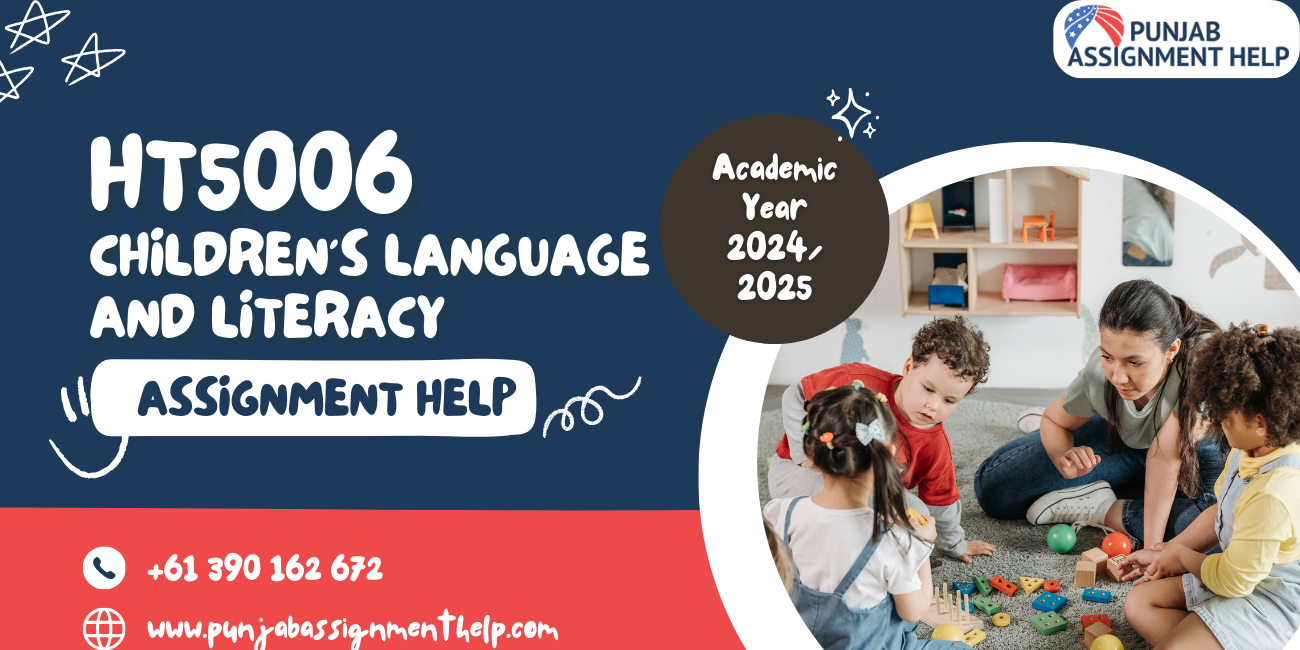
Cover page
| Unit Details | Name | Children’s Language and Literacy |
| Code | HT5006 | |
| Year, Trimester | 2024, T2 |
| Assessment Details | Name | Research essay |
| Due Date and Week |
Individual Student Details | Student Number | |
| First Name | ||
| Family Name |
| Submission Declaration | Integrity Declaration | I have read and understand academic integrity policies and practices and my assessment does not violate these. |
| Full Name | ||
| Submission Date |
Instructions
| Academic Integrity Information | Holmes Institute is committed to ensuring and upholding academic integrity. All assessment must comply with academic integrity guidelines. Important academic integrity breaches include plagiarism, collusion, copying, impersonation, contract cheating, data fabrication and falsification. Please learn about academic integrity and consult your teachers with any questions. Violating academic integrity is serious and punishable by penalties that range from deduction of marks,failure of the assessment task or unit involved, suspension of course enrollment, or cancellation of course enrollment . |
| Format Instructions |
|
| Penalties |
|
Description
Students are required to analyse the theories and practices discussed in the first five weeks of the unit, focusing on meaning-making, linguistics, and language development and acquisition theories. They are also required to critically analyse these theories and practices with reference to a contemporary issue regarding language and literacy. The essay will be submitted via Blackboard.
Requirements
The research essay engages students’ critical thinking, analytical and writing skills and helps them in their analysis and synthesis of the topics covered in the first five weeks of the unit.
Analyse how theories of linguistics, and language development and acquisition can be applied to understand and build responses to practical situations and problems. Key questions include: What is the purpose and main facets of each theory? Why is the perspective included in the theory? What are examples of how the theory can be or has been used? How do the theories shed new light on practical problems? Use this research essay to analyse and synthesise the topics covered in the first six weeks of the unit.
The research essay should be 2,500 words in length. The essay should be well-written, well- organised, and free of errors. It should accurately summarize the key findings of the selected theory and practices and should use supporting evidence such as information from the report and internet sources to back up the analysis. The essay should also include original insights and ideas, and should be presented in a clear and concise manner. It must include specific examples from your professional placements.
Rubric
Not Satisfactory (0-49%) | Pass 50-59% | Credit 60-69% | Distinction 70-79% | High Distinction 80-100% | |
| Framing and | Title irrelevant to the | Title does not accurately | Title reflects what the | Thesis and purpose are | Concise title Well-written |
| situating of the | topic. No sufficient | reflect what the project is | paper is about. Good | fairly clear and match the | introduction. Excellent |
| topic and ideas | introductory information | all about. Vague | discussion of cited works. | writing task. Thesis and | articulation of the |
| 25% | to the topic.Little or no | discussion of introductory | Adequate depth of insight | purpose are somewhat | problem and question to |
| discussion of problem | information and problem | and analysis of existing | original. Good situation of | be solved. Scopeis | |
| background. Problem | background. Objectives | work and problem to be | paper with in larger topic. | achievable, inclusions and | |
| statement is not concise. | and questions relevant | solved. Objectives and | Correct subject-relevant | exclusions are supported | |
| Objectives and research | but do not accurately | research question | theory well-explained | by logic/evidence. | |
| question are irrelevant to | reflect what the paper is | accurately reflect what | and applied correctly. | Meaningful connections | |
| the topic. Framing is not | meant to achieve. Scope is | the project is meant to | to proposed work are | ||
| specific. Incorrect model | not realistic. Correct | achieve. Scope discussion | communicated effectively. | ||
| or theory or ideas usedor | subject-relevant theory | is thorough and | Excellent grasp on | ||
| irrelevant to unit. | not explained or not | achievable. Correct | relationship of paper to | ||
| applied. | subject-relevant theory | the larger topic. Correct | |||
| explained and applied. | subject-relevant theory | ||||
| clearly explained and | |||||
| applied comprehensively. | |||||
| Argument and | Offers simplistic, | Offers some support that | Offers solid but less | Well-formed , logical, and | Substantial, logical, and |
| content | undeveloped, or cryptic | may be dubious, too | original reasoning. | concrete development of | concrete development of |
| 25% | support for ideas; | broad or obvious. Details | Assumptions are not | ideas. Good discussion of | ideas. Assumptions are |
| inappropriate or off-topic | are too general, not | always recognized or | cited works. | made explicit. Details are | |
| generalizations; faulty | interpreted, irrelevant to | made explicit. Contains | germane, | ||
| assumptions; and/or | thesis, or inappropriately | some appropriate details | original, and convincingly | ||
| errors of fact. | repetitive | or examples | interpreted | ||
| Findings and | Results are not stated or | Results are stated; little or | Results are described; | Good discussion of results | Excellent discussion of |
Not Satisfactory (0-49%) | Pass 50-59% | Credit 60-69% | Distinction 70-79% | High Distinction 80-100% | |
| insights 25% | are incomplete; little or no relevant discussion of their significance or value to the topic. Conclusion is not provided or not relevant. | no relevant discussion of their significance or value to the area of research. Conclusion provided but is missing certain components. | adequate discussion of their significance or value to the topic. Conclusion provide a decent summary of what the project is all about. | in light of topic, problem context andtheory. Good quality references cited with strict adherence to the prescribed referencing style. | results; exceptional insight and understanding of their significance or value to the area of research. Well-written conclusion which wraps-up the project and provides direction for next steps. |
Overall organisation and writing 25% | Includes an unacceptable number of grammatical errors; contains formatting errors; failsto properly cite sources; fragmented and very hard to read. References not provided or very few references provided, poor quality sources cited. | Includes some grammatical and or formatting errors; writing style is sometimes difficult to read; descriptions are hard to understand, verbose, or repetitive; uses too much jargon. References provided, however not fully adopt the prescribed referencing style. | Includes occasional grammatical and formatting errors; writing style is generally easy to follow; description depicts the project well but uses some jargon. A complete list of references. Adhere to the prescribed referencing style. | Free from grammatical and formatting errors; description is clear, concise, and very easy to follow; uses appropriate technical and non- technical descriptions as appropriate. | Well formatted and presented written assessment, free from errors and well expressed. Tone is mature, consistent, suitable for topic and audience. Adheres to required length. High quality references cited with strict adherence to the prescribed referencing style. |
Total 100% |
"Achieve academic excellence with Punjab Assignment Help—your trusted partner for high-quality, timely assignment solutions across all subjects. Get started today!"


Get original papers written according to your instructions and save time for what matters most.